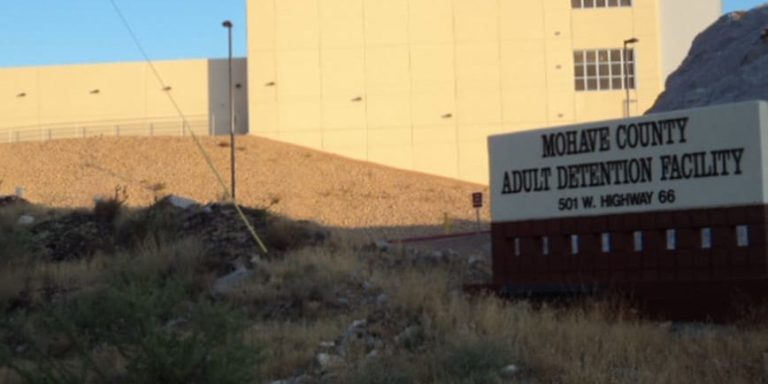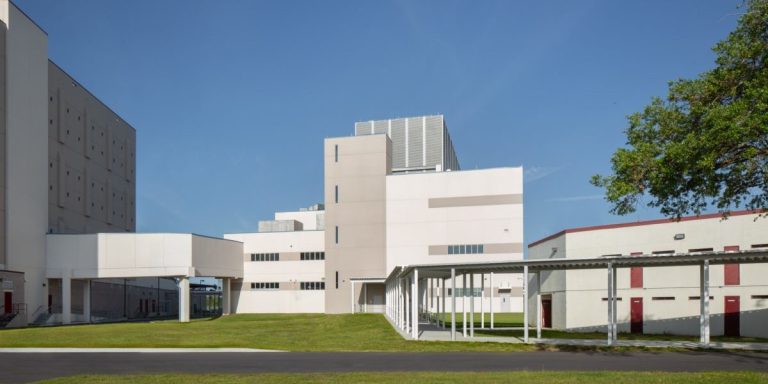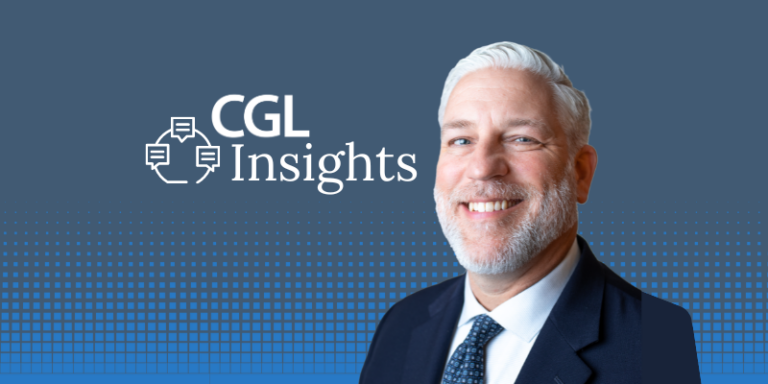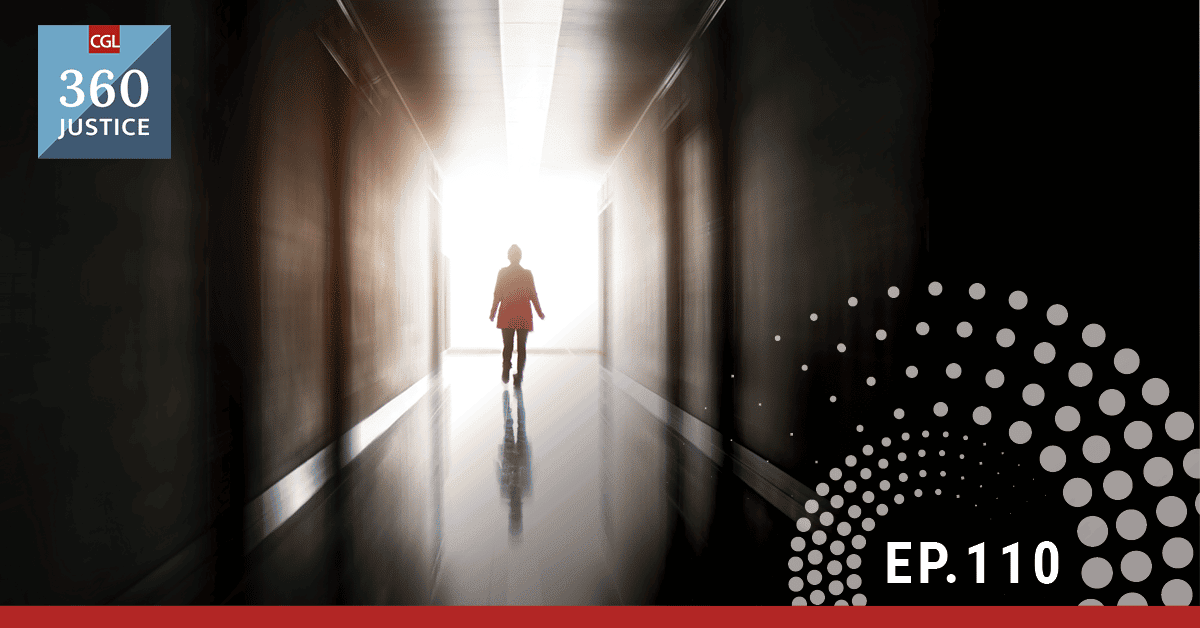
Examining the Role of Mental Health in Criminal Justice with Dr. Elizabeth Falcon
There is a unanimous consensus that the criminal justice system needs to change – but what exactly needs to change, and how?
Dr. Elizabeth Falcon, CEO and founder of nationally recognized consulting and management firm Falcon, visits 360 Justice to discuss the growing trend of creating change-oriented environments that promote successful reintegration opportunities for inmates. Dr. Falcon also lends her expertise on different treatment approaches, the recognition of trauma, and how diversion and deflection translate into more manageable and agreeable inmates.
In this episode, we explore:
- The dual-diagnosis patient – patients with mental health needs along with previous or current substance abuse
- The built environment and its contribution to stabilizing or declining mental health
- The ability to quantify cost savings and a measurable outcome for a stronger inmate re-entry program
- The success of cross-collaboration between systems, stakeholders, and decision-makers within the justice industry
Meet Our Guests
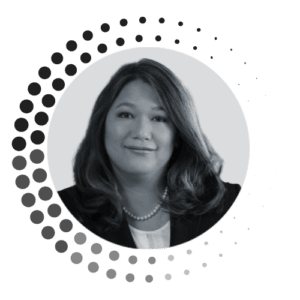
Elizabeth Falcon, Psy.D., CCHP, MBA
Dr. Elizabeth Falcon is a nationally recognized expert who has spearheaded behavioral health program strategy and innovation for jails and prisons nationwide. With over 20 years of experience as a Correctional and Forensic Psychologist, she has developed, implemented, restructured, monitored, and managed jail and prison mental health programs in well over 200 facilities in 27 states. This includes 30 adult state prisons (IL), 11 juvenile prisons (IL), and over 20 BOP prisons, US Marshals, and ICE facilities in 5 states.
Dr. Falcon led and continues to lead field experts in the implementation of evidence-based models and best practices in jails and prisons nationwide. Dr. Falcon holds strong expertise in: Mental Health Program Development for Jails and Prisons, Suicide Prevention, Evidence-Based Programming for Severely Mentally Ill inmates, Specialized programming for Segregated Inmates, Restoration of Competency, Sexually Violent Predators, Substance Abuse, Inpatient/Outpatient Programs, Community Reintegration, Policy Development, and Specialized Assistance to Consent Decree or Court Mandated Facilities. Dr. Falcon has worked with large consent decree facilities such as the Bernalillo County Metropolitan Detention Facility in Albuquerque (NM), Cook County Jail in Chicago (IL), and Maricopa County Detention Facilities in Phoenix (AZ).
Dr. Falcon is a leader in analyzing, evaluating, and restructuring intricate suicide intervention systems for large and small facilities. She has served as the keynote speaker for many industry audiences on such topics as: Suicide Prevention, Managing High-Risk Populations, Segregation, and Restrictive Housing. She has trained and taught hundreds of healthcare and security staff in various correctional mental health and crisis intervention topics.
Dr. Falcon is a member of the International Corrections and Prisons Association. She works closely with many Corrections organizations and provides strong support for the National Sheriffs Association, Major County Sheriffs Association, and the American Jail Association. She is an active member of the National Sheriffs Association Psychological Services and the NSA Jails, Detentions and Corrections Committee. Dr. Falcon works closely with the Department
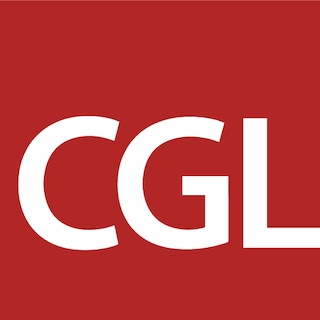
Bob Glass, AIA
An architect by trade, Bob Glass, CGL’s Director of Justice Services, is a nationally recognized expert consultant for the planning, conceptualization, and functional analysis of all sectors in the criminal justice system. His extensive experience covers work on more than 500 projects in 38 states and four foreign countries, spanning city, county, state, federal, and international levels; and includes facilities in all degrees of custody for adult men and women, juveniles, and inmates with special needs.
Podcast Transcript
Eli Gage: [00:00:00] Good morning, everyone. And welcome to the 360 Justice podcast. I’m your host, Eli Gage and I’m joined today by my co-host and friend subject matter expert, Robert Glass. Bob runs our justice services division and has really spearheaded the inmate patient healthcare planning portion of what we do at CGL. So I thought he would be a great addition to our conversation this morning.
And I’m really happy to have Dr. Elizabeth Falcon on board today. Dr. Falcon is the CEO and founder of Falcon, which I think is a super cool company name.
Falcon is a nationally recognized consulting and management firms specializing in mental health services. And I think what we would all agree that what we have in the United States now is, could be termed a mental health care crisis. Dr. Falcon is quite busy even during COVID. So we’ll dive into that in a second, but. Dr. Falcon I wanted to ask you, Falcon as a company kind of emerged. I mean, I’ve been doing this in this market for 30 years and then suddenly Falcon was there. Tell us a little bit about how you started the company, your background, your career, I’m curious to know how you started this very successful company.
Elizabeth Falcon: [00:01:24] Sure. So let me start with my background. I am a licensed psychologist. I have over 24 years of experience in developing and implementing jail state community mental health programs. And it’s in maybe over 27 states and oh, I’d say about 200 facilities across my career.
This includes jails, prisons facilities within the bureau of prisons. I practiced as a clinician and therapist within these systems in the past. I maintained my one-on-one patient doctor relationships throughout. I learned about jails and prisons within the context of client relationships and jurisdiction relationships.
It inspired me to build upon my vision for the future with better outcomes for all individuals involved in the justice system and also reliable programs and mental health operations for the client and for the leadership and administration stakeholders that run the facilities and over and over, what I experienced were in my, in my career were issues with, suicides, lawsuits and having rundown systems that were not effective and, and not sustainable at all. So that’s why I created Falcon in 2017. And it was formed essentially to bring together the best minds in the correctional industry.
And we brought dozens of the nation’s correctional, behavioral health experts, licensed psychologists, psychiatrists, medical doctors, security experts, researchers together to provide know how to counties and states as they worked to improve their facilities, operations and care and treatment that they provided to the inmates. We actually help them to envision what jails and prisons would look like in the future. And create learning environments that promote change opportunities helping them to build very advanced programs, focused on results and also focused on successfully reintegrating the inmate into the community.
And you know, I would have to say elide that I guess, vital to all this in my vision throughout my career was that I believe firmly that no matter how challenged the system or inmate transformation can occur, if, if, if the care is restorative for that inmate. And if. If the program itself is forward-thinking and results oriented and innovative. I think everybody was talking about, we gotta do something different. You know, we’re doing the same things for these inmates and it’s not helping. So what does that different look like? And I wanted to provide that to the industry.
Eli Gage: [00:04:12] I’m curious to kind of quantify what is and you mentioned just a second ago, the state-of-the-art programs what, in your opinion would be a state-of-the-art program versus no program at all?
Or how could you say, how can you quantify the programs that are out there now and, and how, how you might get better programming it at, in a state county, et cetera. So, I mean, in order of magnitude, what would be the ideal situation versus the not so ideal
Elizabeth Falcon: [00:04:45] situation? Well, I think that’s really hard to answer because a lot of jurisdictions differ in their resources.
You know, some of them lack funding, some of them have the funding, but have decision makers that aren’t quite motivated. I think that if I were to give you a picture of a state of the art. Program in a jurisdiction that’s got unlimited funding and are motivated to, to make that change and make that leap.
I think you would have in your jurisdiction, a community based facility where you’re bringing in community aspects to your your treatment inside the facility. And what I mean by that, as you know, state of the art now is providing access to the level of treatment that is out there in the community to the inside of the facilities.
And there are so many well-designed programs that do that now. We’re talking diversion programs, deflection programs, re-entry programs, co-located programs where you’ve got community based. Treatment that is co located in facility next to the jail where you can just route the inmate to that facility.
So these are the develop new developments these days that are emerging. And, you know, if I were to pick a jurisdiction that I wanted to really help give them the state of the art program, I would help them build all this. And to be, it’s not the goal of, you know, incarceration, it’s the goal of keeping them out.
And that means if you divert, that’s less. Tax dollars in the facility, if you deflect the inmate doesn’t even have to have a justice track or you know, a footprint in the system. And if you have a re-entry piece, then you can ensure that you’re making all efforts to provide them with as much opportunity as possible to be successful and stay out of the facility.
For those that are not able to be deflected and diverted or are not released we have to do something about their safety. A great suicide prevention program. If it wasn’t a state of the art, I would say a more treatment centric program inside the facility, and then obviously there’s that security piece.
Baltimore is just an amazing, one of a kind. First of its kind facility where you’ve got it all. You got a treatment centric facility where your population and your, your main population, the mental health and medical population are stratified. Meaning they’re really segmented so that we can determine the level of care for, for, for this population and, and tailor that even the units to the needs of these different levels of care.
And then you’ve got your diversion, your deflection, and your entry piece to this new facility.
Eli Gage: [00:07:40] So that’s where the, I think Bob, the the convergence of space on our design side, having that space, whether it be outside the perimeter, inside the perimeter to, to administer these programs in Alabama, a big part of what we have put in there is the space for these people to get these programs.
Bob, talk a little bit about how that is important in terms of. Not only mental health, but programs in general.
Bob Glass: [00:08:09] Yeah. I think Elizabeth is an interesting thing. You’re bringing up about Baltimore and just this whole programs that were to a certain extent revisiting, but I think we’re doing it differently now are more to the forefront.
But you know, in Alabama, they’re obviously they’re, they’re not the Baltimore client, but they are a client that wants to be very progressive and move forward. And so they they’ve allowed space for image to get out, to move space for programs, urban staff still it’d be hard obviously to do them, but I think one of the issues that came up in Alabama that would be fun to explore a minute with you is how to deal with what we’ve referred to, I guess, as dual diagnosis patients though, that kind of move between the mental health needs and the medical needs.
But they’re kind of curious to get your input on that and how, how you see that working.
Elizabeth Falcon: [00:08:58] Sure. If you look at the statistics, when it comes to the inmate population, if you were to count substance abuse long with their mental health diagnosis, I would say about 80 to 85%. I know that sounds high, but I think it’s that high, I would say would probably at some level to some extent could be diagnosed as having a dual diagnosis some type of depression, some type of substance abuse. But just to answer your question, but I think it continues to be true that the best approach for treating dual diagnosis and co-occurring disorders is what we call an integrated or concurrent treatment approach. And that means addressing all of these disorders simultaneously. In the most recent research and practice has emphasized that specialized treatment approaches within this integrated concurrent approach is, is very beneficial. You’re talking, treating you know, different levels of aspects of the whole, the whole condition, stress, you know, the, the cognitive piece, the thinking piece, the relaxation piece queen therapy and then, you know, stress reduction therapies but these are all specialized therapies or approaches that are being used right now in dual diagnosis treatment. And then there’s another piece to that too. The recognition of trauma in the development of substance use disorders and addictions. And also mental health conditions that’s growing too
and it’s, it’s becoming more prominent. You mentioned, you know the conversions of space and the facility and mental health conditions and substance abuse, I mean, space matters. The built environment matters because if you listen to me talk and all of these, you know, conditions to have to be treated, and we look at what a justice facility is, or a secure facility is the way that the facility city is at right now and how they are in the, roughness and the harshness of them do contribute to the decline of these conditions and these diagnoses.
So. The role of trauma in dual diagnosis issues and treatment. I think have been recognized for years, it’s just coming out in the forefront now. But the pervasiveness of the trauma and its effects is being increasingly recognized especially in, in justice architecture and, and building new spaces.
And I think that there’s a huge acknowledgement for that. And you know, when we do these spaces, especially when Falcom helps translate these programs and these mental health operations to the architects, we ensure that we are also including the pieces of this, that will address trauma as well.
Bob Glass: [00:11:46] One of the things that we’re constantly facing those units, architects and the committee is the cost to build. Well versus the the cost to operate, but also to build a facility that has open air and spaces and green spaces where you can get outside that are beneficial for Cooper.
And so on. You see the term to build in these mega one building projects just for cheaper. And just curious if you could just catch a few thoughts on the mega, essentially, you’re always in the orders and catch food thoughts on how that alters the mental health treatment programs, what you might do to try to combat, you know, let’s say you’re going in an older facility built back in the nineties and it’s just a mega structure.
How do you get in there and start talking to them about developing these programs, developing alternatives for the mental health, particular mental health inmates?
Elizabeth Falcon: [00:12:40] It’s a funding issue, right. For everybody. And I think that when, when you go into a facility and you talk to decision makers, you’ve got to hit their pain points. You know, a lot of these older facilities face lawsuits from suicides from having only one option to, to house individuals that are behavioral or have severe mental health issues that act out, they restrict them, they put them in restrictive, isolated conditions.
And, you know, there’s, there’s gonna be consequences for that nowadays. Jurisdictions are being sued, left and right for use of restrictive housing. There’s a whole movement towards you know, removing restrict of housing altogether. And so, you know, I think my point there is older jurisdictions will have many of these pain points.
And I think that. You know, to, to, to demonstrate to them that an investment upfront in some of these things will go a long way. You know, more diversion and deflection, for example, means fewer people in custody, which translates into fewer dollars expansion of treatment services, mean more people successfully managing their behaviors and so lower suicides, lower acting out more peaceful and more manageable inmates.
A stronger re-entry program means fewer re offenders and also translating into, into less cost and pure dollars for them. So we just have to demonstrate what this investment upfront is going to what the value of that monetarily is for them. In the end.
Eli Gage: [00:14:19] Dr. Falcon, do you feel like that some of the message of our industry gets lost in translation? And let me explain that a little further, you know, the, the advocacy groups, which you talk about the bad publicity currently in our opinion, lose sight of the end goal, which is what all of us want that, that practice in this market, which is a better outcome.
So on the mental health side, do you feel that frustration. Kind of like we do now because I’ll I’ll quote I think it was a term Bob that was used at CHCF the California health care facility, which was better beds. So the beds and the space have had to change. And yet the move of foot to deincarcerate.
You know, we talked to Gary more recently and, and, and the respect of the correctional officers is, is lacking in a lot of people’s opinion. Now we seem to be the bad child in the market right now, in terms of what we’re trying to do. When in fact I can tell you, and I know you feel the same way, we all want better outcomes.
And to do that sometimes means space. So are you feeling that
Bob Glass: [00:15:35] To maybe paraphrase the question a little bit with this current movement to obviously reduce beds, reduce everything, what you’re doing as far as implementing programs within facilities, because we still have people locked up in facilities, but you’re doing, are you feeling the impact of that pressure upon things you’re doing right now in your studies doing your programs as you’re implementing them?
Elizabeth Falcon: [00:15:59] Absolutely. This is a great, I mean, this is very timely question because we just had this happen to us in one of our jurisdictions. We created this beautiful program that took two years to create, and finally it all came together. And we’re working with a, you know, AE firm on that. And then the powers that be came back and said, well, we want to reduce our, our funding, our total for the entire project by, I don’t know, X million dollars.
And so we have to cut back and scale back on that, the program that we built to match that number. So, yeah, it’s, it’s pretty frustrating, but the good thing about having, you know, real, real experts with deep, deep knowledge of. These programs is that they know the ins and outs of it, and they know how to scale it back in an appropriate manner, that it will still work for the, for the jurisdiction.
And even with the scale back program it can still be effective and sustainable and be results oriented and, and have the results that the jurisdiction is looking for. With the amount of funding that they have. And so is there a frustration? Yes, but do we were ultimately say, okay, let’s get over it. Let’s use all of our skills and thinking power to make sure that we deliver what the client is looking for. Now, there is a line there, you know, sometimes things get cut back and funds get removed to the point where there’s no way we can work with it.
And that’s when, you know, we have to kind of have a come to Jesus, meeting with the client and heart to heart and say, look you know, for what you’re wanting in the funds that you’re providing us it’s going to be very challenging to give you what you want and make you happy. And so we have those types of discussions.
Bob Glass: [00:17:52] Let’s say that you’ve, you’re in a facility now count, let’s call it a county jurisdiction. And the programs are all now starting to work and met. You’re getting the things they need. You’re seeing outcomes that are positive, the facility, they served their time they’re released, and there’s nothing to support them on the outside.
And the county jurisdiction juristic itself. How do you see yourself being able to start work on getting the support they need after we, after release, even reentry gives them some support, but the minute they leave there, there’s a tremendous failure rate among a lot of these people. So that’s what I was trying to figure it out when we can fix it in the, in that institutional world.
But what do we do on the outside for support?
Elizabeth Falcon: [00:18:34] I think that’s a great question because many jurisdictions that’s been the issue forever and ever. And it’s actually one of the main pillars of our programs is that involvement of community first in inter-agency collaboration.
So in the last 10 years or so, we’ve seen collaboration like this that has fundamentally changed the way correction systems are operated and planned and developed, and we’re doing more of it now. You’re talking about when I say inner agency, collaboration, court, social service agencies, probation officers, public defenders, prosecutors, law enforcement.
I mean, you name it now working across the systems. That previously were honestly to be siloed. Jurisdictions are beginning to see now that inter dependence that cross collaboration and, and training of staff, the decision-makers and all the stakeholders if they do that, they’re finding a lot of success when they work to together to adopt these things like such, such as target performances, which is recidivism. Or measures like rates of recidivism. If they work together, they actually reduce it. And there are seeing that now. We’ve got jurisdictions in the Northeast. In the west coast where we’ve help them build diversion, deflection, and re-entry facilities. We cannot accomplish those without community stakeholders involved right from the beginning. With that approach treatments, resources, case managers and linkages, jobs and housing, all of that has been pre-planned and all that has been set in place and set in motion even before the inmate leaves the facility or the system. I don’t know if I answered your question, but, you know, I think it was best to answer that by kind of letting you know how it’s being done today, or these approaches that are emerging today.
Eli Gage: [00:20:37] Recently the American recovery fund act was passed? Prior to that, it was the cares act. I think Bob and I tracked it was about $600 billion going into counties and states to help fund COVID relief, if you will. What do you know about that? Will that help your process going forward? I’m assuming that some of that money will be available for mental health on the justice side. Have you seen any impact from that
Elizabeth Falcon: [00:21:09] Oh yeah, I had one great example, actually, the, that in 2020, mid 2020 we launched a training that was COVID specific to specifically for Officers that was funded by the American rescue act, actually. And it was a training that helped them to manage their stress, to help them build more resilience and to help them with leadership skills in the midst of COVID. And this training was pretty novel. It was a novelty because there was, there was not a wellness training ever that really specifically focused on officer wellness and COVID in the midst of COVID.
So we, we built the training curriculum and launched it in Texas actually. And it was very, very, very well received. So, and this was all funded by, by that act. So, yeah, it’s we, we felt the impact and the American rescue act, you know, I mean mean it obviously included billions and billions of dollars to counties and states also grants for new community-based service centers and for treating individuals with co-occurring mental illness and substance abuse disorders.
And we actually applied for several of those grants and have, and are waiting for some, to have gotten one of those grants.
Eli Gage: [00:22:34] You said something really interesting that I hadn’t really thought about, which is not only are you involved obviously on the inmate. Mental health side, but also on the correctional officer, mental health side, is that a, is that a big piece of your business or is that a growing piece?
Elizabeth Falcon: [00:22:50] It’s, it’s a very big piece and it’s a piece that’s in demand all the time. So, and, and, you know well, we, we all know that, I think it’s not just now with COVID, but even before officer wellness has been a huge, huge, hot topic in corrections and the growing suicides of officers it’s just been in the forefront and, you know, all the, the emphasis on opposite performance and being out in the public. I mean, there’s a real crisis with, with our first responders and our CEO staffs right now.
Eli Gage: [00:23:26] Yeah. Not to mention the
Elizabeth Falcon: [00:23:27] turnover, the turnover and the retention and, and issues. It really is an area that we have to focus on.
Eli Gage: [00:23:36] Bring us up to speed on the state of mental health. Maybe say from 2017 to now, is it improving in your opinion? Is the aware, I think the awareness is certainly there. Yes. Yes. Okay.
Elizabeth Falcon: [00:23:48] I think, you know, if we were to look at like, let’s say, how did we get here at this point? And if we were to look at lecture, say, let’s go through the pastoral real quick. In the fifties and sixties after so many of the state hospitals were closed there wasn’t really that infrastructure of community resources we needed to make that shift to community placements.
So we all know that the jails became the de facto mental health facilities basically. And they were never built to house people with mental illness, by about 2010, they were actually, they became warehouses. Of kind of chronic low-level offenders with mental illness and addictive behaviors.
That was when we were criminalizing mental illness. And we, we never had the ability to care for them or treat them. In the last 10 years, I would say last five, 10 years, we’ve seen this, this fundamental change in the collaboration of jurisdictions because of the awareness of, you know, doing something different. So I think that in the last 10, 10 years or so, and I mentioned this before, one of the fundamental differences is that inter-agency collaboration to community and stakeholder participation, bringing that community piece into the facilities and working together.
There’s also this recognition. Now that incarceration itself is not the goal for the justice system. In fact, it is successful, like I said earlier, diversion successful in deflection. Diversion is when somebody’s actually arrested, but they are diverted from the jail because there is a reroute and there’s an opportunity to place them to a treatment facility instead of the jail. And so it’s that treating of their behavior versus punishing that behavior thing deflection is they don’t create a justice footprint at all. They do something wrong. The officer picks them up rather than the officer having only one opportunity to bring them into the jail. They have, let’s say a place for maybe they needed a warm place to stay at, or they broke into, I don’t know, a store. And so rather than putting them into the justice and having a justice footprint into the jail, they will put them actually into a deflection center. I can tell you, Baltimore has a deflection center and it’s, co-located it’s right next to the facility and they call it the third door and it just the patient inmate goes into that third door where they just kind of get, are given 24 hours, 40 hours to cool off. And given whatever they need, there is a place there for a relaxation and a chair. There’s a warm blanket there, you know, there’s a phone charger place where they can charge their phone just to cool off and, you know, so they can avoid being arrested altogether. And then of course the recognition of re-entry has gotten stronger too.
And there’s. Lots and lots of reentry programs now. And these are fancy re-entry programs. I can tell you. Sure. Well, we, we helped build in, in California. Yeah. And they’re really state-of-the-art re-entry programs. So I think those are the things that are they’re changing now and it is getting better and you can see it in, especially in justice architecture.
I mean, that’s, I think JA is so critical and valuable for the advancement of the field and what the architects do. You all or part of the charge to advance the field because you guys are the ones building the new spaces and, you know, as a clinician, as the program director or for behavioral health, we’re only able to do, do so much without you guys.
If we don’t have the space and you all know this, we don’t have the space to run our programs. If we don’t have. You know, housing appropriate housing to place our severely mentally ill inmates where it’s conducive for their their restoration and their treatment. We’re, we’re not effective as clinicians or not as effective.
So it really takes both to advance the field and I’m, I’m so glad you all are out there and are, are, you know, I think for the most part, all of the JA groups that I’ve run across and worked with Falcons work with have been very forward thinking.
Eli Gage: [00:28:17] I’m going to defer to my history, professor Robert Glass, as I often do, Bob, what, what is your feeling? You’ve delved into this mental health issue quite a bit from a JA or architects perspective. What, what would you, how would you summarize mental health and its progress to date? I think we know
Bob Glass: [00:28:38] a lot more about the architectural settings, the colors, the light, the outdoor spaces and things, and developing these space for programs to occur.
Obviously, architects don’t do that programs developing, but I, one of the things that’s over time we’ve gotten much better at that. I think a lot of the research that’s happened in the healthcare industry with hospitals and things has come over into the justice side. So there’s some good data there that informs very well that his, his historically the justice until recently, I think most of you might agree to has not had good data. You can’t sit there and say by gosh, doing this reduces the risk citizens when it’s just starting to come about now. They just historically was never there. And I I’d liked your piece on the program space of housing because there’s a huge debate with every client we work with, probably most of the architects about what’s the appropriate housing now.
In jail settings, particularly for the mentally ill, a good example, we’re working with a jurisdiction in the Midwest where we talked about single cells, dormitories multiply C two, four, and six, and everybody wanted to pinpoint what’s the right
number in a multiple, obviously. So it’s multiple procedure rooms are being used more and more now in the country.
And it almost became a mental health issue of how many did you put in a room? What’s the right number? What’s the wrong number. I’d love to get your input on that through it. It’s just because I know you mentioned that.
Elizabeth Falcon: [00:30:03] That’s a great question. And that’s, you know, that’s, again, one of those things where it, it does look like a numbers exercise and it is to some degree a numbers exercise, but it’s also very clinical exercise.
And let me, let me explain what I’m talking about. So. You got to know who your mental health population is in that jail. First and foremost. Now within that mental health population, there is a portion of that that’s acutely in severely, mentally ill, acute inmates that’s your seriously, mentally ill inmates. When I say non-acute, that’s your mild to maybe to moderate inmates with mental health conditions. And so they, they don’t, don’t, it’s important to stratify that because. Those two levels of inmates require very two very different levels of care and two very different sets of environments and housing types and housing sizes and housing units.
So you know, you start off with that and you determine the percentage of acute, you determine the percentage of non-acute. And then based on that percentage, then how you determine the size of of your units and also the type of units, what kind of environment you’re looking at? Like, let me give you an example with acute inmates, right?
They’re seriously, mentally ill. They get triggered. They get overstimulated. They need their personal space more. They can’t handle interpersonal too much of interpersonal interactions. I mean, these guys are seriously mentally ill. They they’ve got severe issues. So the recommendation is that acute inmates go in an acute unit or housing unit that are kept small.
These units are kept small and manageable with easy access and clear line of sight. Obviously there’s a lot of maybe incidences that may occur if these guys are not managed correctly, but you know, individual cells for example, are common with, with acute inmates. In fact, some of them need that personal space to have that individual, you know, room to, to do their own thing, but that’s not recommended for a non acute non-acute are milder.
They need that interpersonal interaction. In fact, it’s research shows. That it’s better to put them with some aids because that actually improves their functioning. It improves their mood, that interpersonal connection contributes to the restoration and, you know, so on and so forth. So it’s, there’s a lot of clinical aspects to it.
You know, these guys that are acute require a therapy, almost like a therapeutic community type of structured programming inside these areas, they need that sense of relatedness. And, and, you know, I mean, I would say this, this applies to both acute non-acute. There are psychological needs there that these units and these housing areas need to satisfy.
And I mean, they’re all injustice, architecture, architecture, but most people wouldn’t believe that just a built environment or a certain built environment will. Actually intrinsically motivate somebody and, you know, motivate them to actually engage in tasks, more lighting, you know, more openness, neutral colors, less noise, clear air.
I mean, all that stuff is important for these guys. So you know, non acute folks, they require more open door, Metairie settings. That’s the recommendation anyways. They can be larger in their size. We typically recommend anywhere from 32 to 48 beds. That’s usually kind of the set of beds and you know, a therapeutic milieu environment with these guys with direct treatment approaches.
So, I mean, you get my drift. And so there is a numbers aspect to it, but there’s also a clinical aspect to it. And. Maybe I went into too much here, but I, I think you, you get the idea that main point, the main takeaway is it’s important to know what you’re looking at in the severity of these, these populations and stratify them and match the unit and the environment to their levels or need of care.
Does that make sense?
Bob Glass: [00:34:29] Yes it does. Yep. Yep.
Eli Gage: [00:34:32] Dr. Falcon, from your perspective, as a nationwide consulting and management specializing in mental health services from on our side of the table, from the planning, from the operational planning, from the design and the maintenance of these facilities, what can we do better in your opinion?
Elizabeth Falcon: [00:34:53] I’ll go through what I’m observing now with working with you all. I would say you guys are recognizing that this isn’t just building more of the same anymore, that there is this paradigm shift in the industry. I think Bob, we talked about this before you mentioned the past that yeah, this was the shift in your mind was kind of there all along. But now it seems like the decision makers and the clients and jurisdictions are willing to go along with that for whatever reason, some may be motivated. Because of lawsuits, others may be motivated because they have the funding or they’re just progressive people or decision-makers.
But I think the main thing is they are kind of matching us where we’re at now. The one thing I would say about the groups now that we’re working with, they have a recognition that they are needing help in this arena and needing consultants, such as Falcon to really help guide them and help you know translate some of the stuff for them when they do their work.
What I would say is lacking though, is I think it would really benefit J groups and you all to join trainings that are clinically oriented, too. Maybe join some of Falcon’s trainings, maybe join some of the ACA trainings that are out there or sessions, even conferences, so that you guys are more familiar with the clinical aspects of this.
And it makes it a whole lot easier for us to collaborate. We run into some firms where, you know, they have us, they pull us in, but they don’t use us. And I think a lot of that is again partly a recognition or lack of recognition when to use us. And also partly because they’re so used to the way they’re thinking and they’re thinking architectural versus clinical, when, and then it, it kind of appears as if they’re close minded, but they’re not, it’s just a lack of understanding of what we do.
And the more that you can understand what we do. I think the more you can understand where we belong in, in, in your world
the other is it goes both ways. Now, behavioral health, us educating ourselves on what you guys do, because I find my people, we train like soldiers. We’re the things that eat to even get into a project in AA project or J project in valgum. I’m talking now my internal team, they got to go through a lot of JIA training.
We even bring in J experts in our training. To help us understand, you know, just lingo your lingo. So we can, when we’re collaborating with you guys, we understand you know, what you mean by rare chase? You know just as simple as that. So I think the collaboration would be better. And also your ability to interface with clients and talk with authority about, you know, behavior health, and, and not being dependent or reliant on having, you know, a, a firm or consultant be with you in your interviews and in your bid interviews.
And your people can talk reliably about what’s going on out there with beaver health. I think that that comes from educating yourselves and being able to attend trainings outside of what you do. So, and it goes both ways. So. I don’t know if that helps it. That’s what I mean. There’s certainly that recognition there.
Some firms, they recognize it. They, they go through the motion and pulling, you know, consultants and us in, but they don’t use us appropriately and can do so much more and could be so much more different from others if they just knew how to use us.
Bob Glass: [00:38:53] That was super helpful to hear.
And
Eli Gage: [00:38:56] I think
Bob Glass: [00:38:56] you’re right.
I think it goes both ways.
Eli Gage: [00:38:58] Yeah. Dr. Falcon thank you so much for spending time with us. Appreciate the work that you do. It’s important. We’re all pushing in the same direction and it’s important that this gets done properly. So thanks for your time.
Elizabeth Falcon: [00:39:14] You’re very welcome. Thank you guys.
Eli Gage: [00:39:16] Super helpful conversation with Dr. Falcon. So thanks everyone for listening to our podcast, that you can find this and other episodes on the standard podcast platforms such as apple podcasts, Google podcasts, Stitcher, and Spotify, or visit us at cglcompanies.com backslash podcast. If you have topics that you’d like to hear, please reach out to me at podcast@cglcompanies.com.
Thank you.





